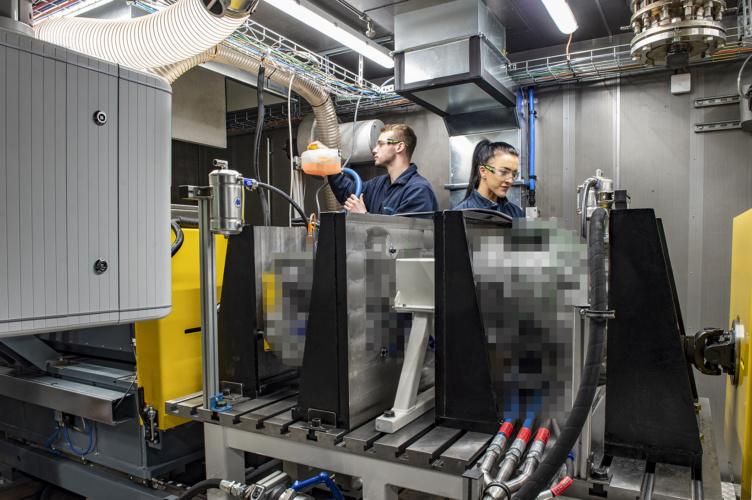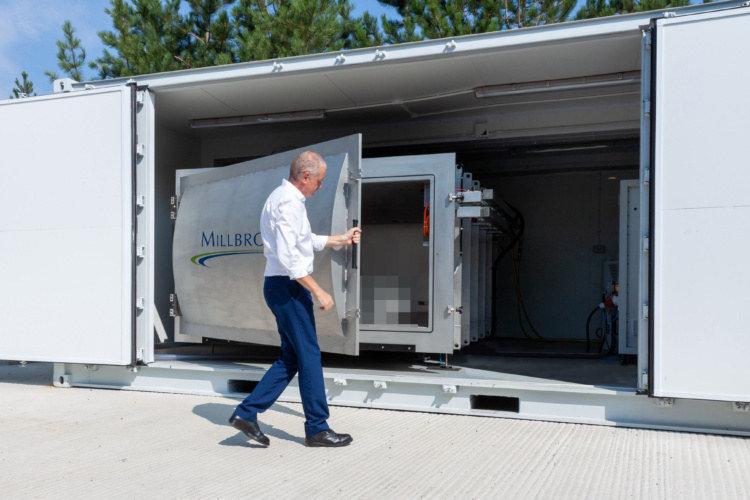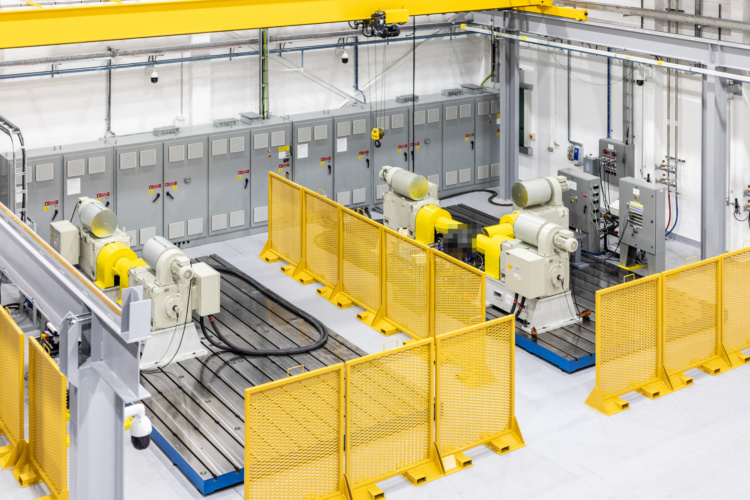
In the previous guest blog on behalf of UTAC CERAM Millbrook, our colleague, John Proctor, discussed the intensifying need for OEMs to focus on emissions testing for the next generation of vehicles.
The introduction to that piece, which you can read here, also serves as an appropriate scene-setter for the topic on which this blog will focus: electrification.
What we’d like to look at in this piece is what goes on behind the scenes when it comes to getting a new electrified vehicle onto the road – and safely. Afterall, the complex technology that goes into electrified powertrains and vehicle batteries requires the same scrutiny, rigorous testing and tireless development work as that of an ICE vehicle. The difference now is that the whole industry is against the clock.
Attempting to do justice to the entire suite of electrification testing options in one blog is a tall order. However, we will attempt to summarise the key areas that manufacturers and their engineering teams ought to be aware of.
Electric Driveline Testing
 Dustin Harrison, Director - USA Testing Operations, UTAC CERAM Millbrook
Dustin Harrison, Director - USA Testing Operations, UTAC CERAM Millbrook
For manufacturers looking to complete a full design verification plan (DVP) for an electric drive system, they are required to run the full range of tests outlined in ISO 16750 and LV124. This is where ‘one-stop shop’ test providers such as UTAC CERAM Millbrook come to the fore.
A good place to start is electric motor dynamometer testing, which refers to high-speed e-motor testing programmes using a dynamometer to test electric motors for optimisation and characterisation. This kind of testing is of particular interest to those suppliers that want to characterise their design requirements against target torque, speed and power values.
As well as testing for optimisation and characterisation, the durability and reliability of electric drivelines must also be fully scrutinised. This is done through key life testing on components such as gear sets, differentials and others during full load operations of the EDU.

Naturally, environmental testing is an integral part of any electric vehicle test programme. Conducting ISO 16750 testing on electrified vehicle drivetrain systems and components might include the following tests:
- Environmental testing of electric drives under full load and power. Rotating wheel outputs can be connected to the test rig while an enclosure around the part under test provides localised environmental conditioning and humidity control up to 95%
- Dust and water ingress testing
- Back-to-back durability testing under environmental load, subjecting power electronics and electrical machine to different environmental conditions
- Mechanical testing, including shock and vibration testing of drive systems
In addition to ISO 16750, our engineers regularly perform low-volt system testing to LV124 and provide strip and rate facilities for component teardown and analysis.
It is essential that manufacturers of Electric Drive Units (EDUs) undertake performance tests on production-level components against UN/ECE Regulation 85 (ECE R85), GBT18488 and in-house standards. In order to do this, an expert team of engineers must carry out environmental performance tests to extremes of temperature and humidity, mechanical tests and visual inspections of the test item, and also undertake witnessed ECE R85 power measurements.
Before passing the baton to my colleague, Peter, I would just like to wish our USA team, a happy 20th anniversary at the forefront of electrified powertrain testing and validation.
Battery Testing
 Dr Peter Miller, Chief Engineer – Battery, UTAC CERAM Millbrook
Dr Peter Miller, Chief Engineer – Battery, UTAC CERAM Millbrook
The batteries we find on today’s electric vehicles present a raft of new challenges and testing requirements for engineers. The day-to-day life of a battery engineer therefore consists of a myriad of different test scenarios as we strive to: assess the life of battery cells, modules and packs; determine battery safety; and validate the performance of batteries under a range of environmental conditions.
We use a wide range of test methods to achieve this, and I shall attempt a whistle-stop tour of the key ingredients of a battery pack testing programme.
Pack life and performance testing of hybrid and electric vehicle batteries is normally carried out within a climatic test chamber. Our chambers can electrically cycle complete automotive battery packs with a useable volume of 23.1m3. These chambers can simulate rapid temperature changes between -40°C and +90°C, and humidity is controllable between 10% and 95%.

Battery mechanical shock testing simulates sudden acceleration and deceleration due to an impact. This impact might be due to a crash, or it might occur while the battery pack is being handled outside the vehicle.
Battery safety and abuse testing is exactly what it sounds like, but in order to be done thoroughly, it has many different strands to it. For automotive Lithium-ion batteries the minimum legal requirements are section 38.3 of the hazardous good transportation regulations and the ECE R100 battery tests. Together these include battery drop tests, battery corrosion tests, battery nail penetration tests, fire resistance tests, altitude tests and vibration tests.
As might be expected, the amount of testing being performed on Lithium-ion battery packs is rapidly growing as more electrified vehicles come to market. So far the results of this testing appear to be positive. They use metrics such as vehicle fires per registered vehicle, or vehicle fires per million miles driven. EVs are currently 5 to 100 times better than conventionally fuelled vehicles.

As my colleague concluded in his blog about emissions testing, the pace with which the automotive and wider transport industries are evolving makes for a very dynamic testing environment, too. Engineers involved in the world of electrified vehicle testing are certainly in for a busy decade to come, as the 2030 ban on petrol and diesel sales looms large.




Nanogenerator consumes CO2 to generate electricity
Nice to see my my views being backed up by no less a figure than Sabine Hossenfelder https://youtu.be/QoJzs4fA4fo